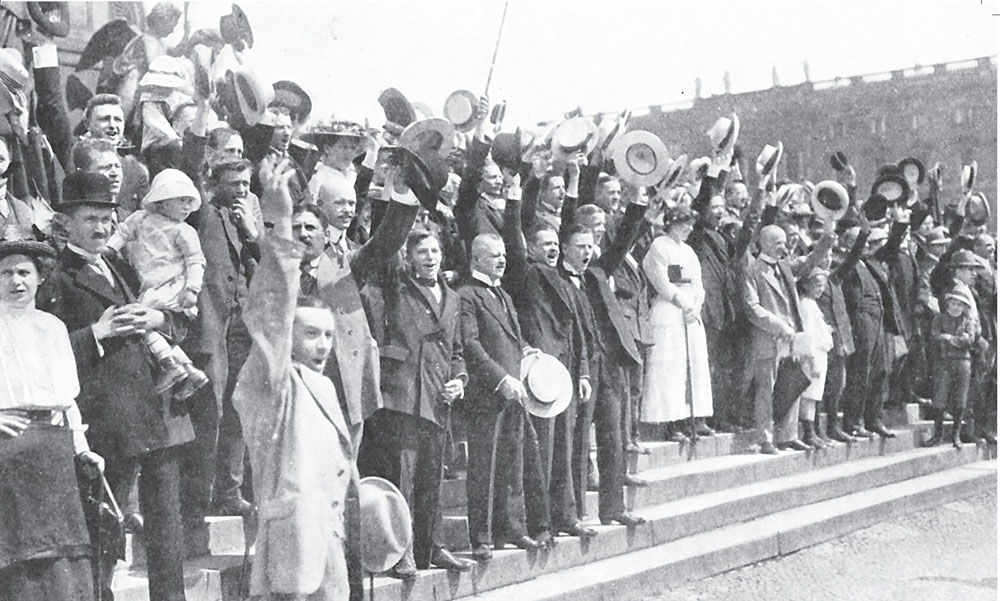
Introduction
In the autumn of 1917 Captain Otto Schwink, a General Staff Officer, by order of the Chief of the General Staff of the Field Army produced a book entitled The Germans at Ypres 1914. That work was founded on official documents and the book featured the following preface sanctioned by the General Staff of the Field Army at German Headquarters in the autumn of 1917:
‘The gigantic scale of the present war defies comparison with those of the past, and battles which formerly held the world in suspense are now almost forgotten. The German people have been kept informed of the progress of events on all fronts since the 4th August 1914, by the daily official reports of the German General Staff, but the general public will have been unable to gather from these a coherent and continuous story of the operations.
For this reason the General Staff of the German Field Army has decided to permit the publication of a series of monographs which will give the German people a general knowledge of the course of the most important operations in this colossal struggle of nations.
These monographs cannot be called histories of the war; years, even decades, must pass before all the true inwardness and connection of events will be completely revealed. This can only be done when the archives of our opponents have been opened to the world as well as our own and those of the General Staffs of our Allies. In the meantime the German people will be given descriptions of the most important of the battles, written by men who took part in them, and have had the official records at their disposal.
It is possible that later research may make alterations here and there necessary, but this appears no reason for delaying publications based on official documents, indeed to do so would only serve to foster the legends and rumours which so easily take hold of the popular imagination and are so difficult, if not impossible, to correct afterwards.’
Herr Schwink opened his account with a misty eyed recollection of the days of August 1914 when the Imperial German Army was still imbued with the concept of war as a chivalrous game:
‘Whoever has lived through those great days of August 1914, and witnessed the wonderful enthusiasm of the German nation, will never forget that within a few days more than a million volunteers entered German barracks to prepare to fight the enemies who were hemming in Germany. Workmen, students, peasants, townspeople, teachers, traders, officials, high and low, all hastened to join the colours. There was such a constant stream of men that finally they had to be sent away, and put off till a later date, for there was neither equipment nor clothing left for them. By 16th August, before the advance in the west had begun, the Prussian War Minister in Berlin had ordered the formation of five new Reserve Corps to be numbered from XXII to XXVI, whilst Bavaria formed the 6th Bavarian Reserve Division, and Saxony and Würtemburg together brought the XXVII Reserve Corps into being. Old and young had taken up arms in August 1914, in their enthusiasm to defend their country, and 75 per cent. of the new Corps consisted of these volunteers, the remainder being trained men of both categories.

The German populace cheering the outbreak of war.
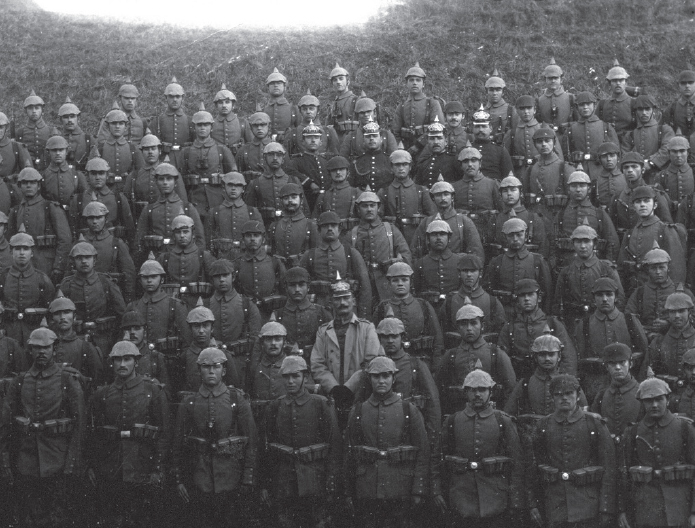
The pickelhaube was the most common form of head-gear at the early part of the war, however it was by no means universal as Jaeger and Landsturm units often sported a different form of hat which, on occasion, led to casualties from friendly fire as the landsturm were similar in style to those of the British and Russians.
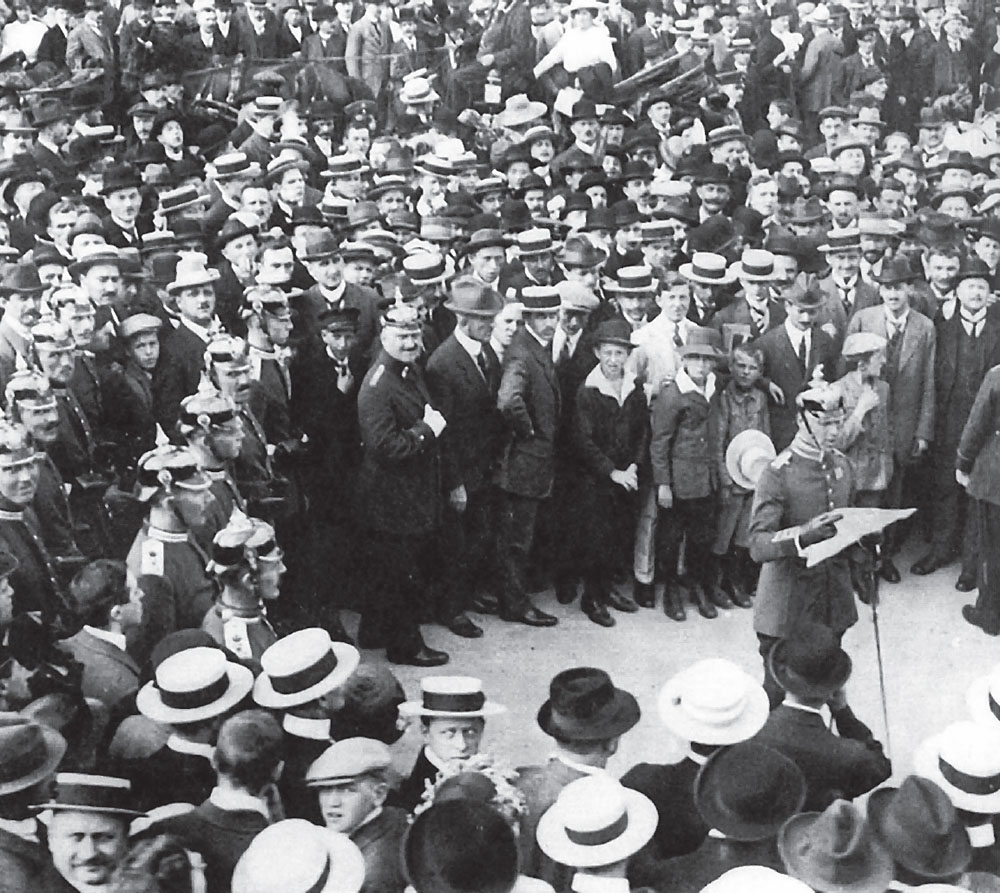
A German recruitment rally 1914.
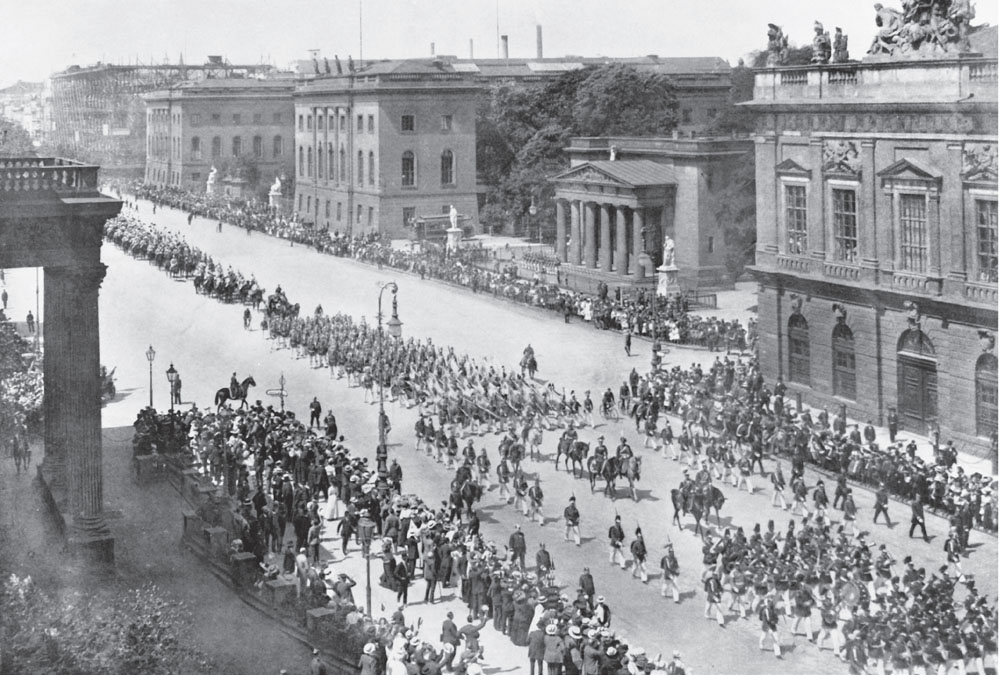
Germany before the Great War was a highly militarized nation. This procession down the Unter Den Linden in 1914 is typical of the military pomp which was at the root cause of the war.

German reservists arrested in Britain.
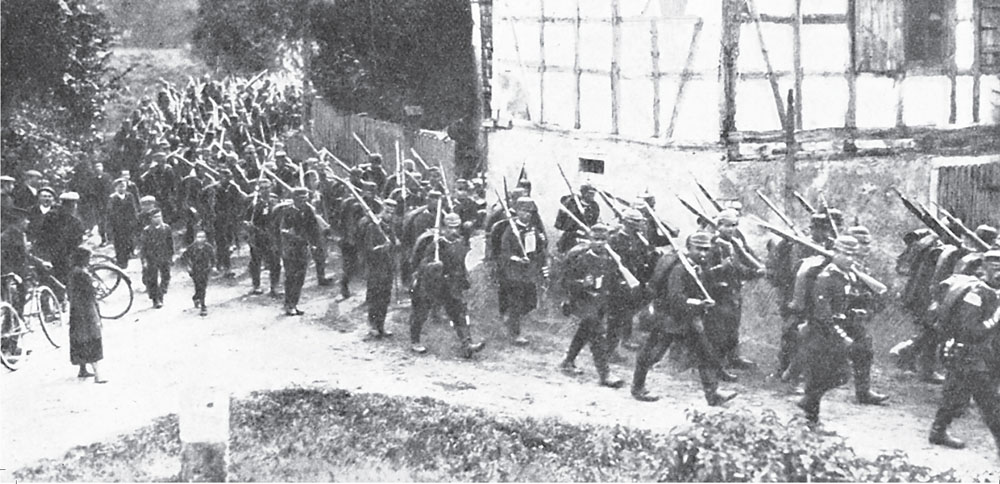
German infantry on the march.
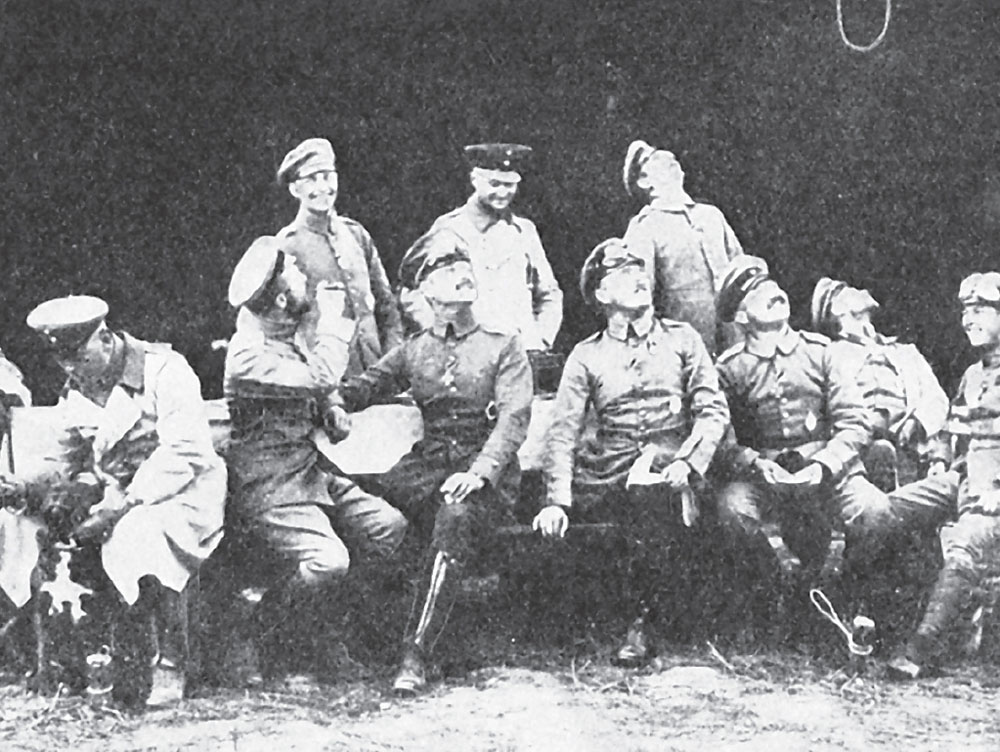
A Zeppelin crew watching another aerial battleship as it proceeds overhead.
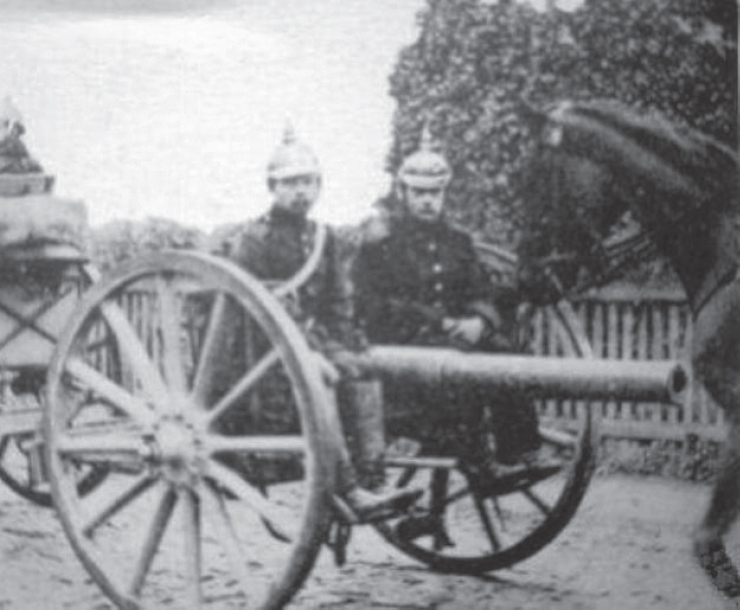
The cavalry and the guard regiments were the formations of choice. A career in the artillery was viewed as a less prestigious posting. This is somewhat ironic as it was the artillery which proved to be the most important arm of the army.

Germany’s air fleet was enhanced by the addition of the Zeppelin airships.
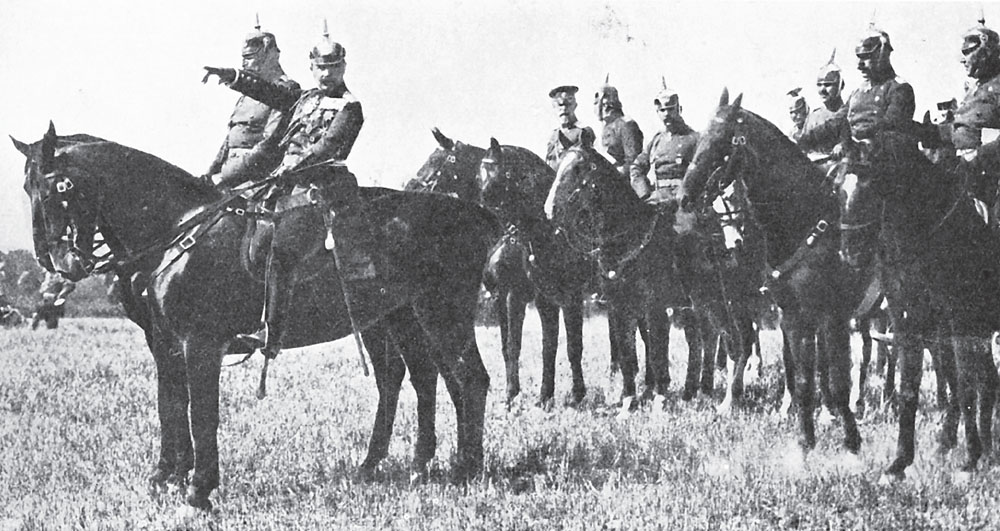
His Imperial majesty, Kaiser Wilhelm directs his troops during pre-war manoeuvres.
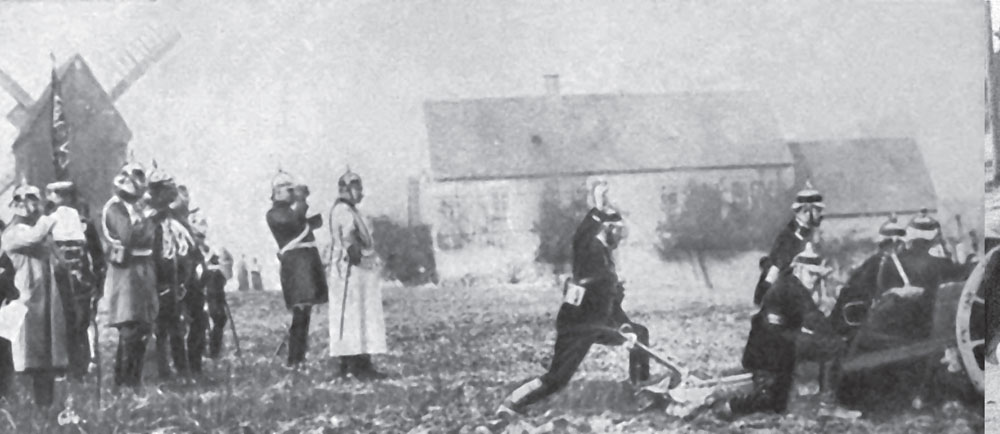
Shortly after the outbreak of the war, the Kaiser observes an artillery piece being fired in anger.

Officer’s rations are issued by the mobile quartermaster’s wagon.
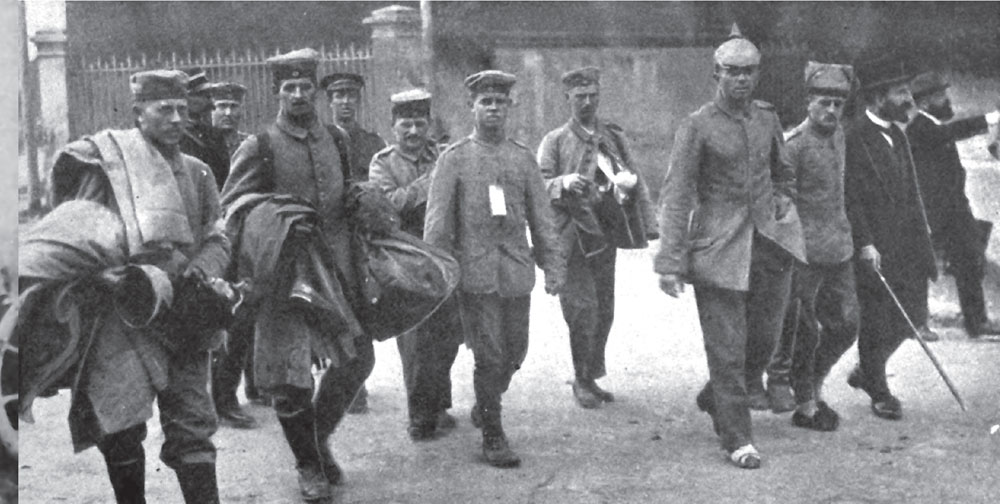
A weary band of German prisoners captured by the British at La Ferte.
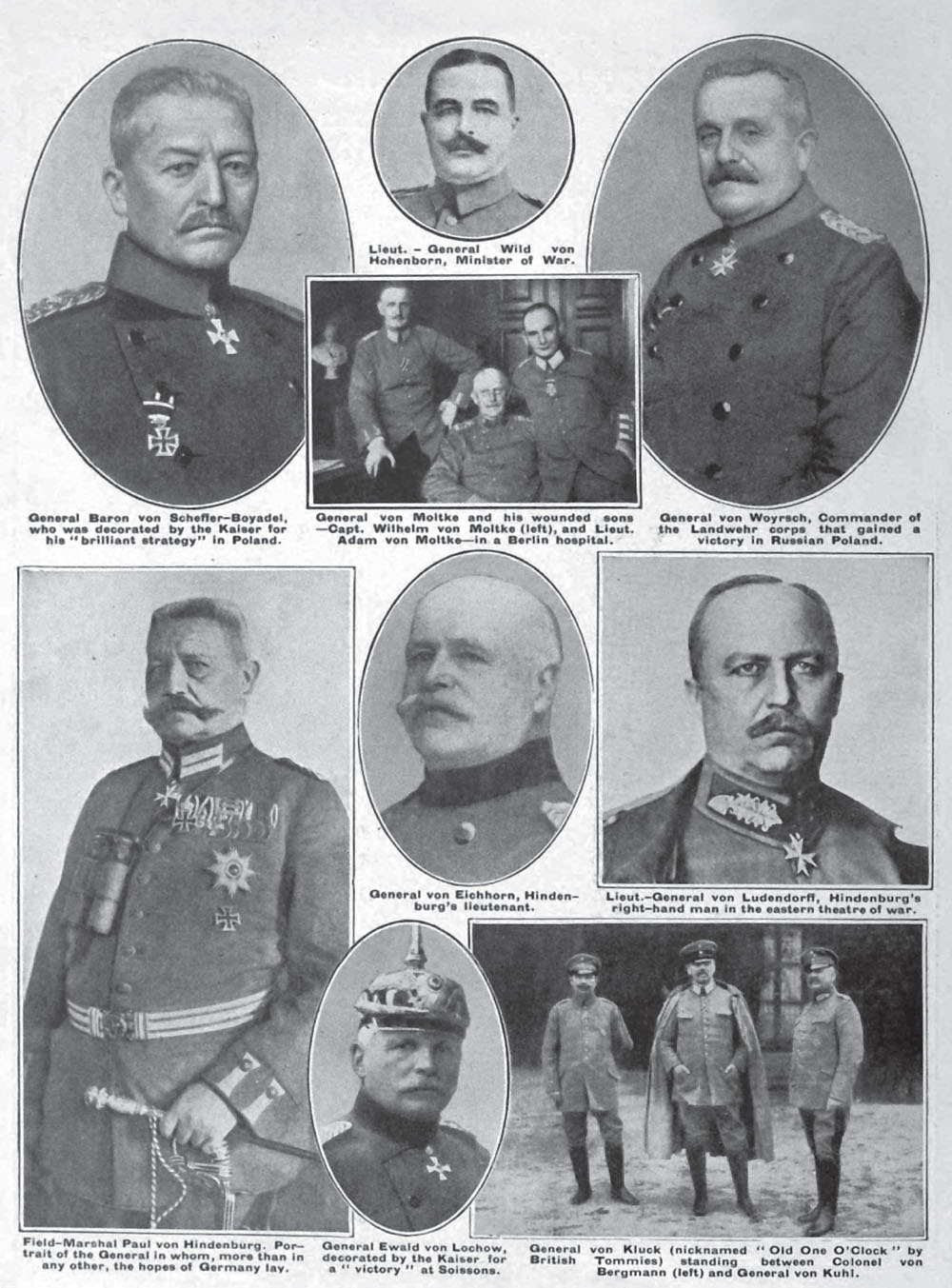
“Super Huns” the contemporary view of the German leadership as expressed in the pages of The War Illustrated.
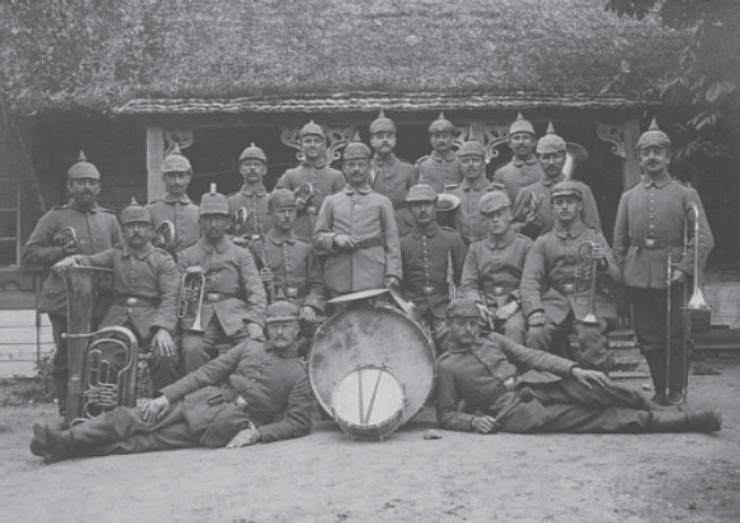
The whole of German society had been militarized by 1914. Compulsory military service was universal.

A pre-war image of Dragoon Regiment number 25 of the Imperial German Army.
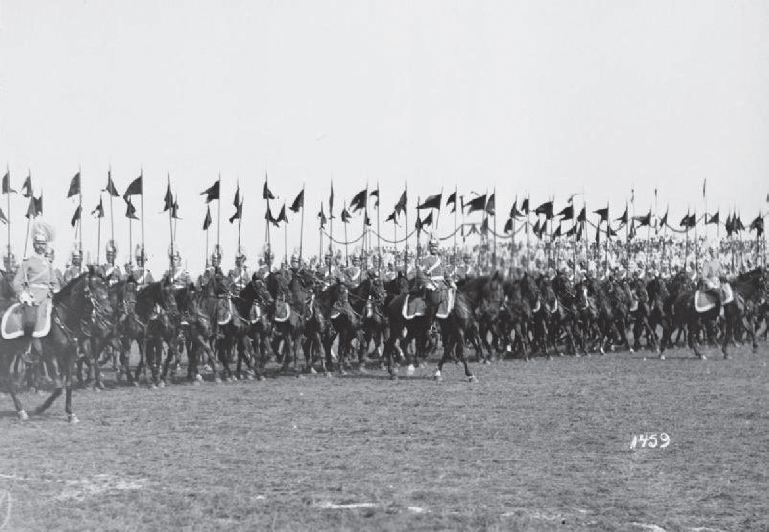
Cavalry of The Imperial German Army on prewar manoeuvres.
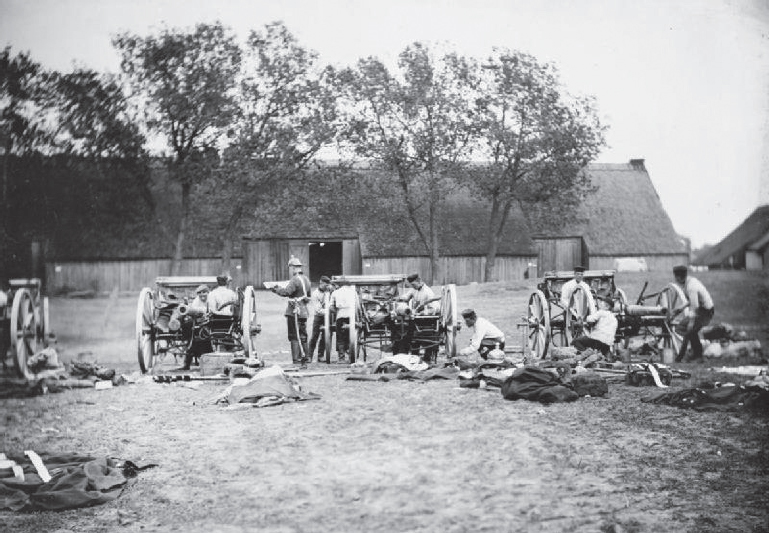
The Imperial German Army in 1914.